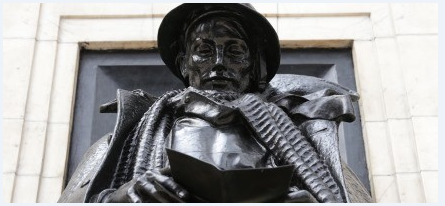City Hall is marking the First World War centenary with a new photographic exhibition that offers a powerful reminder of the human cost of war and the impact it had on the lives of Londoners. An estimated 124,000 died in the Great War and “Exploring London’s First World War Memorials” highlights some of the thousands of memorials across the capital that were created to honour the fallen.
The exhibition – organised by the Mayor of London with help from the War Memorials Trust, English Heritage and others – features new images taken by London photographer James O. Jenkins. It provides an insight into the role of war memorials in local communities who wanted to honour those who died while serving their country, many of whom were buried in cemeteries near the battlefields where they fell, or have no known grave.
Although most people will be familiar with major London memorials such as the Cenotaph in Whitehall, they may be less aware of local war memorials that can be found in every borough. Many were created after the First World War, and were often paid for by public subscription or the collective efforts of local communities, work places, schools, churches, town councils and other institutions. Memorials took many different forms including monuments, crosses, obelisks, sculptures, plaques, paintings, fountains, buildings and landscape features. Some were designed by leading architects and artists. They are all an important part of our national heritage and many remain a focus for annual acts of remembrance.
The exhibition remembers the 1065 former staff and three members of the London County Council (the London-wide authority at the time), among whom were 27 members of the London Fire Brigade (plaque at London Fire Brigade HQ) and 334 Tramways workers (plaque at Finchley depot) who lost their lives between 1914-18. The exhibition also remembers the 387 officers from the Metropolitan Police and City of London Police, (memorials for both services at Hendon Police Training College).
Also featured are memorials at Paddington and Kings Cross stations which respectively remember 2,524 men of the Great Western Railway and 937 men of the Great Northern Railway. The redeveloped Kings Cross station is home to a restored memorial, the design of which echoes the 11 soldiers depicted in John Singer Sargent’s 1919 painting “Gassed”. In both cases the memorials were further dedicated to fallen colleagues following the Second World War.
Other memorials featured include St Botolph without Bishopsgate church, thought to be the oldest First World War memorial in England. The memorial at Sutton House in Hackney is the result of a bequest which enabled the National Trust to purchase the property, while the memorial clock tower in Stockwell includes the names of 574 men, all of who lived within half a mile.
“Exploring London’s First World War Memorials” has been produced by the Greater London Authority, featuring photography by James O. Jenkins. It runs until Friday 12th September 2014 at City hall. Entry is free.
 East London News A Force for the community…
East London News A Force for the community…




